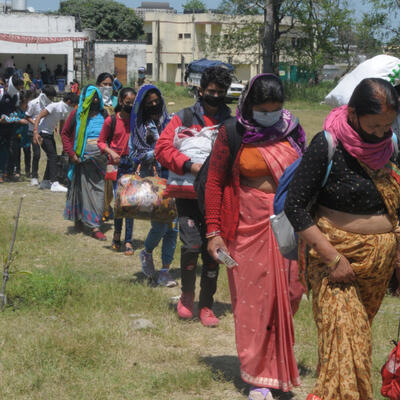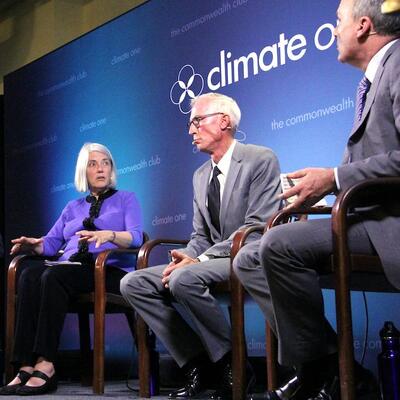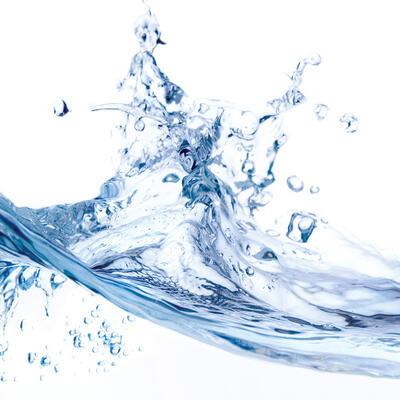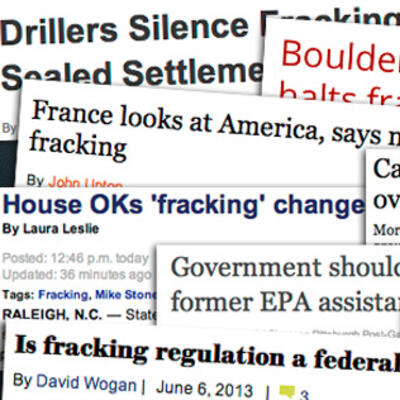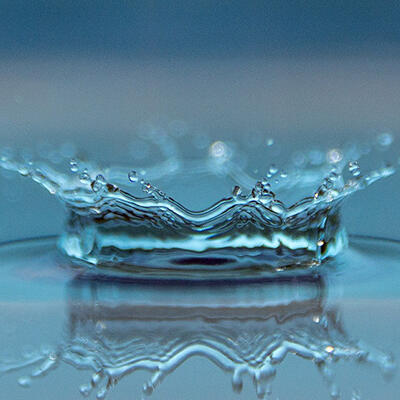
Reinventing Water
Guests
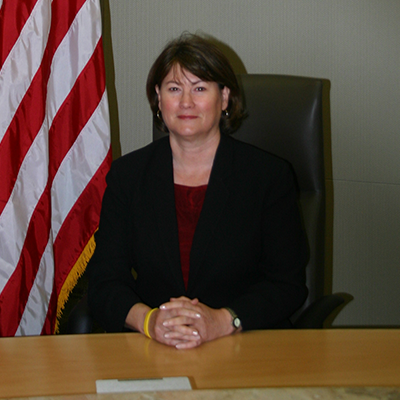
Martha Davis
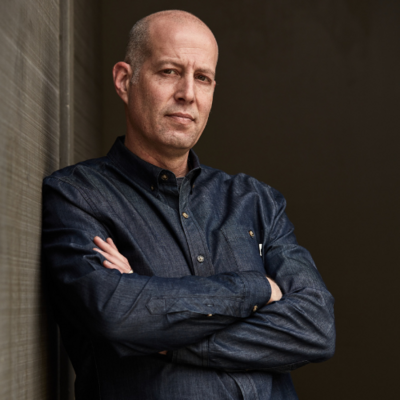
Abrahm Lustgarten
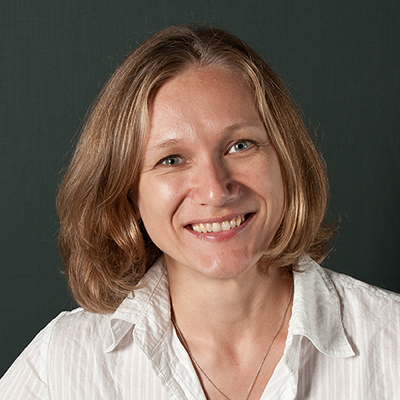
Anna Michalak
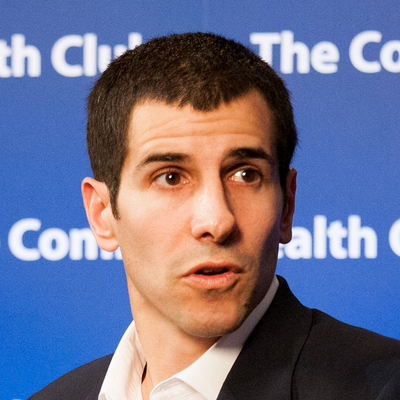
Tamin Pechet
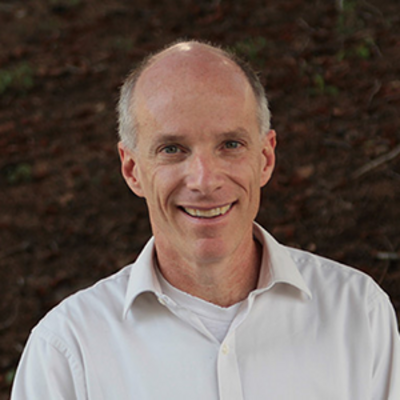
David Sedlak
Summary
As the drought drags on, water is becoming an ever more precious resource. It’s time to rethink the ways that we use, reuse, share, sell and save every drop.
Anna Michalak, Faculty Member, Department of Global Ecology, Carnegie Institution for Science
Martha Davis, Executive Manager for Policy Development, Inland Empire Utilities Agency
Abrahm Lustgarten, Reporter, ProPublica
Tamin Pechet, CEO, Banyan Water and Chairman, Imagine H2O
David Sedlak, Professor of Mineral Engineering and Co-director of Berkeley Water Center, UC Berkeley
Full Transcript
Greg Dalton: Will the brewing El Niño save California from its searing drought? Not for long if it shows up at all this year. I'm Greg Dalton and on Climate One today, we'll talk about the drought ravaging the Western United States and how people are changing the way they think about water, food and energy. Later in the hour, we will discuss the flow of money into water into California's farms and cities. First, most people don't eat in the bathroom, but what you eat may have a bigger impact on how much water you use than your showers or how you brush your teeth. Here to talk about the drought and personal habits and other global water issues in California beyond is Martha Davis, board vice president of the Earth Island Institute and also executive manager at the Inland Empire Utilities Agency; and Anna Michalak, faculty member in Global Ecology at the Carnegie Institution for Science. Please welcome them to Climate One.
[Applause]
Greg Dalton: Anna Michalak, let's begin with you. You wrote an article recently and talked about the five big pools of freshwater in the world. So let's start globally and then come down to California and the Bay Area. Where is this fresh water and how is it changing with climate change?
Anna Michalak: All right. So the amount of water overall on earth is not changing, there's only so much water and it cycles through different phases, through different forms, different areas, different locations. And only about 2.5% of the water on earth is actually freshwater, the rest of it is saline. And of that 2.5%, about 2% is frozen. So only about half a percent overall is freshwater and that's primarily, of course, in streams and lakes, but the vast majority of it is actually groundwater. And when you think about the amount of water that actually cycles year-to-year it's even a very small fraction of that. So even though the total amount of water on earth is of course huge and it doesn't really increase or decrease, the amount of water that we can actually use year-to-year is a very small fraction of a very small fraction of that total. And any changes in where that water is, what quality that water is and what form it takes has a huge impact on our ability to use it in a manageable way.
Greg Dalton: So how did Boston get our water? How did that happen?
Anna Michalak: So one of the ironies of the changing climate that we're living in is that dry areas tend to get drier and wet areas tend to get wetter and also more of the precipitation tends to come in these extreme events. And so it's a bit of the rich get richer, the poor get poorer, but of course more water isn't always good either because then you might have issues with flooding and so on.
Greg Dalton: Right. So when we say that global warming means it can get wet and cold in some places, and dry and hot in others. Martha Davis, the snowpack is big for water in the Western United States. In fact, the West is kind of built on the back of snowpack, that's changing, the Colorado is changing. Now tell us how that's affecting California water where the key parts of our supply in California.
Martha Davis: Well, let's take an example of just from this year.
In May, we had zero snowpack. We've never had that before. That's astonishing. And if you actually look in towards Oregon and Washington, they have actually a relatively normal rainfall, but they still have zero snowpack. What does that tell you? Warming temperatures are shifting the way in which California receives precipitation. So if we have more rain and less snow, we've developed our water system, so when you think about the reservoirs and the way in which we move water throughout the state through the state water project and through the Central Valley project, the Los Angeles aqueduct, the Hetch Hetchy aqueduct, all of that is based on assumptions about snow being a major part of the storage system that releases the water slowly during the summer months, and allows us to have that water come into our water supplies. If we don't have it in snowpack, it's coming through the rivers, it's coming earlier, it's coming much faster and our systems are not really set up to take advantage of it. So that's kind of the big picture on the temperature impacts.
And then as you start looking at the variability that comes with - that is predicted to come with climate change - more intense storms and wet periods, longer, drier, more intense droughts. As so we look just now at the weather that we've had at this new century, right, it's only 15 years old, we've only had two wet years in that time period, the rest of it has been actually below normal weather. And so we can begin to see at least some of the implications in these weather patterns in this drought that we're experiencing now. If you extrapolate it out to the future and it's even more intense mega-droughts like what we've seen in Australia, we have an entirely different water scenario that we're going to have to deal with, both in terms of our own communities, agriculture and urban areas, but also what it means for the environment.
Greg Dalton: And we're going to talk about the water-food-energy nexus Californians use somewhere about 80 gallons per person a day, something like that statewide. But I read in National Geographic the average American uses about 2,000 gallons because most of their -- a lot of their water use is embedded in other products. So Martha Davis, talk about we don't think about water connected to other issues, we measure water that we directly use and not the water we indirectly use.
Martha Davis: It's true. I think when we get into the estimates of the water that we indirectly use, it's complicated because there are a lot of assumptions that are embedded in those water supplies. So if you look at your food and you look at what went into it, we have a lot of debate right now about how much water almonds use or how much water is in a cow, and whether or not if you change your eating habits you can help address some of the water shortages that are out there. I think that's a really important consideration because you have personal choice about what kinds of foods and where. But the agricultural side of the water supply is also very driven by economics. So you have markets like in China that are actually driving a lot of the agricultural choices that we make here in California. And so I'm very interested in that dimension, but I'm actually much more interested in the choices we make in our homes and how we actually use water and having some sense of relationship for where the water comes from. I think we forget about that and the places that are dependent on the supplies that we have the privilege of using.
Greg Dalton: Anna Michalak, how should people think more holistically about energy, food and water?
Anna Michalak: So I agree with everything Martha said, but at the same time, I think it is important for us to think not just about the water that we're putting on our lawns and the water that we're using in our toilets and brushing our teeth and so on. I think it's important to think about our entire water footprint in the same way that we start thinking about our own carbon footprints. And in that way, a lot of that water is being used in different ways and food is certainly one of them. I mean, a pound of beef takes four times as much water as a pound of chicken, and a pound of chicken takes four times as much water as a pound of corn. And by choosing where we eat on the food chain, we are making choices about how much water we are personally responsible for in the same way as whether we choose to have a cactus garden or a green lawn in our house.
And I think that that it's true because we have a water bill every month, it's much easier to be conscious of that aspect, but the food aspect is important as well as is the energy aspect, whether it's due to the high water footprint of biofuels, or whether it's due to how water is involved in making electricity or a variety of other aspects. And so what I would really love for people to become more conscious of, as we're thinking about the water coming out of our tap, is all the taps that were turned on throughout the state and throughout the country to make everything that we use day-to-day available to us.
Greg Dalton: Martha Davis, you're here representing Earth Island Institute but you also work for a water utility in, what is a farming area or --
Martha Davis: Actually, very urban area.
Greg Dalton: Urban area, okay. Inland Empire, shows what I know about the Inland Empire. But there isn't a whole lot of labeling for people to make these kinds of choices. You don't really know the embedded water source for consumers to make these kinds of choices.
Martha Davis: I think that's completely true and it's one of the reasons why I have often thought about how do you help people understand something like we take water from Shasta reservoir, it comes all the way down through the Sacramento River, it goes into the Delta.
There, it gets pumped out of the Delta. It then flows through an aqueduct to the base of the Tehachapis; it gets pumped up and over Tehachapis the equivalent energy usage as you have for desalination. It actually generates some power as it goes down into Southern California. It goes through a series of reservoirs. From those reservoirs, it gets pumped again. It gets treated. That's another energy-intensive element of the chain. It comes to your house and what do we do with it? I know somebody who has looked at a leak in his toilet; he was losing 200 gallons per day in a running toilet.
So if you think about that water resource that came all that distance, only to just run through the toilet, and then it went into the wastewater system where it got treated again at a high energy cost, to then be released out into the ocean. And so I look at that whole chain and I think about the way in which water and energy is connected, and the choices which we make on the end use of these supplies, have huge implications for how we use energy in the state as well as how we use water.
Anna Michalak: And I think that's a great example because the relationship works in both directions. As Martha was saying, you'll need a tremendous amount of energy to get water to where it needs to go or to desalinate it or to treat it. At the same time, we also use an incredible amount of water to make energy, whether it's through obvious things like water for irrigation, for biofuels or hydroelectricity, but also in electrical power generation, water is an integral part of that process as well. So this is why it's called the ,because energy is needed for water and water is needed for energy, and us using large amounts of both is putting a stress on both systems.
Greg Dalton: So let's think about having a summer picnic and you want to have some guests over. Should you buy paper plates and cups, or should you use the glassware and then think about washing them? Anna Michalak, what do you do if you're having a party? Go for the paper or you go for the glassware?
Anna Michalak: Invite them to bring their own.
Greg Dalton: You export your water.
Anna Michalak: Not a plastic bottle.
Martha Davis: That's right. That's a great answer.
Anna Michalak: Or come quenched. Water will not be served.
Greg Dalton: Bring your own water. But there's a lot of water that goes into making paper.
Martha Davis: Yes.
Greg Dalton: A lot of chlorine that goes into making paper, a lot of, again, embedded water. Martha Davis.
Martha Davis: A lot of chemicals that go into it as well. I wish there was a perfect answer to all of this. I think my answer to it is I look at waste streams and so I tend to be in the favor of reusable things, and I'm willing to take responsibility for washing them. So that's my answer to the question.
Greg Dalton: And in a perfect world that water would get recycled somewhere, right?
Martha Davis: Exactly. I would do it. Well, even I can recycle it in my yard. I mean, the thing about washing things is that you can take the grey water in California and legally use it again. So I have all sorts of systems rigged up - I'm sure you all do too - where you take the water from the sink because it doesn't get caught fast enough and you're putting it in a water bottle and I put it in the dog's dish and then I water my favorite plant.
But those kinds of choices tell you two things. Number one that if you care, there's a lot of things that you can do to really stretch and reuse multiple times water supplies both in your home, and then my agency does do recycled water. So we're treating it and then we're reusing it again and trying to get as many uses out of the water supply as possible. And I think we just have bigger choices about the waste streams that are also associated with the use of water so nothing is unconnected.
And I think the same way that we think about recycling of products and trying to keep them out of the garbage dumps and making sure we're recycling them, the same mentality needs to come with the way in which we use water and the choices that make sure that we're really thoughtful about where these water resources are coming from and how efficiently they're being used.
Greg Dalton: If you're just joining us, Martha Davis is board vice president of the Earth Island Institute, and we also have with us today at Climate One Anna Michalak from the Carnegie Institution for Science. Anna?
Anna Michalak: I just want to follow-up. I think in every situation, there is a decision to be made and in some cases it can become overwhelming; paper cups versus washing a mug. This is why I think looking at our water use at a higher level can be helpful and Martha can speak to that even more than I can. But if you think of the municipal water use, over half of the water on average that we use is outside water use and so rather than necessarily having to worry about the small-scale water choices, we can have a big impact by making a small reduction in those big chunks of the overall pie of our water use, whether it be not watering lawns or through food choices or a variety of other things. And I think it can become overwhelming if you feel that throughout the day there's a thousand decision points about how to use or not use water. And maybe focusing on those few larger chunks where a small fractional reduction can really have a big impact simplifies the equation a little bit.
Greg Dalton: Martha Davis, are you giving Cash for Grass?
Martha Davis: Yes, we are. It's certainly through the Metropolitan Water District of Southern California. They've invested over $500 million this last year in Cash for Grass programs. We were one of the earliest agencies to offer that type of a program. In our area, outdoor water use is 60% to 65% of our residential water usage, so we very strongly encourage people to switch to native plants or California-friendly plants. I’m all for lawns where people are actually using them, but a lot of places people aren't using them. They’re really decorative at this point and they're kind of an anachronism. I would prefer - and this goes back to some of the climate change and how things are connected - I would prefer to make my yard part of an environment that welcomes the native plants, birds, butterflies. Bringing back into the city some of the nature that we've lost through urbanism is really important as part of this bigger picture of how we make choices and how we can kind of coexist, and bring nature back into these otherwise very intensely urban areas.
If I might, I want to give one example from my Mono Lake days. So I was executive director of the Mono Lake committee and that campaign for Mono Lake. And I remember walking through West Los Angeles and coming across a leak, a leak that was so large I could have kayaked three blocks without touching bottom. And I knew that water was coming from Mono Lake. And for me, it encapsulated why the choices that we make. This was simply a large institutional property that hadn't checked its water sprinklers. It was on a weekend and nobody was paying attention, but that much water was running down the street.
And I think even now in this drought, you can look at places and see where irrigation is going over into the streets and that's creating water quality problems for receiving waters. We haven't quite made choices about the types of landscaping that could be much more efficient. And so I really think that there's a personal choice in this that connects us back to the places where this water comes from and makes us much more intimately involved in making choices that can help address climate change in the bigger picture.
Greg Dalton: I want to go to our lightning round where we ask our guests simple yes or no questions. Anna Michalak, yes or no, one way to beat the water restrictions is to take a bath in bottled water from Costco, yes or no?
Anna Michalak: Yes, but you just shower with a friend which would be better.
Greg Dalton: Oh, wow.
Anna Michalak: A better solution.
Greg Dalton: But that could be a longer shower, it depends. Okay. Martha Davis, naming and shaming is an effective way to reform water pigs.
Martha Davis: Yes.
Greg Dalton: Do you do that in your district?
Martha Davis: No, we don't. But I do think that some of the really intriguing information that's coming out about where neighbors can compare how their water use compares with the others in their neighbor has been very effective at helping people understand how much water they're actually using and how much more they could save. Probably one of the underlying issues with shaming and naming is that most of us really don't know how much water we're actually using or how much we should be using. And if we knew what we should be using, I think, we'd be a lot better at conserving.
Greg Dalton: Anna Michalak, almonds get a bad rap. They are not as bad as many people think compared to other sources of protein, yes or no.
Anna Michalak: If you are looking at protein for protein, you are much better off eating your veggies. But if you're looking at dollars per gallon, almonds are actually pretty efficient since they cost a lot of money, so it all depends on what metric you're using.
Greg Dalton: Okay. Martha Davis, water embedded in a pound of beef is how much?
Martha Davis: I don't know.
Greg Dalton: 1,800 gallons according to National Geographic.
Martha Davis: Oh.
Greg Dalton: 127 gallons in a pound of goat so think about those goat burgers, they probably sell them here in Berkeley, I'm sure. Anna, what TV star was recently fined for stealing water from a public hydrant and trucking it to a 60-acre ranch near Los Angeles?
Anna Michalak: I know exactly who you're talking about, but I'm completely terrible at names so I cannot.
Greg Dalton: So if you said Magnum P.I. or --
Anna Michalak: Yes.
Martha Davis: Do I get credit? Tom Selleck.
Greg Dalton: Tom Selleck, there you go.
Anna Michalak: Oh.
Martha Davis: You see I could have gotten the beef question. No, it's who you ask.
Greg Dalton: I was going to ask you, Martha Davis, how much he was fined?
Martha Davis: That I don't know but I know he negotiated his fine.
Greg Dalton: $21,000. Well, that's the end of our lightning round. How did they do? What do you think? I think they did pretty well.
[Applause]
Greg Dalton: Let's talk about what climate change may bring us, Martha Davis, in the form of severe storms. What's that's going to mean for the state water system?
Martha Davis: Well, I mean obviously we're hoping that we get more rain in this drought. But what we're worried about is the intensity of the storms and you can look back at some of the events of this year, and you can see where really intense cloudbursts have taken out some portions of Interstate 10 down in Southern California. It's the intensity of the precipitation and the volume of the flow that then has the capacity to swap our existing flood control systems, and with that comes a lot of water quality problems in addition to the infrastructure damage. And then from the water supply side, we've tried to very carefully build our systems to capture the water up in the mountains, but when we come to our urban areas, we've actually made the mistake of trying to shoot the water as fast as we can out to the ocean and so you get two types of problems. You're losing the water supply that you would normally capture from the mountains; you get these intense flooding events. And then in our urban areas, which is shedding the water as fast as you can towards the ocean, so it's a big mess and it's a lot of infrastructure that's going to have to be modified over the years if these more intense storms are what we're in for.
Greg Dalton: Anna Michalak, you looked globally; volatility unpredictability in the global distribution of water in a climate disrupted world.
Anna Michalak: Right. So what you're saying is exactly right and that not only we're expecting shifts in the total amount of water that different regions get, but we're expecting more intense storms to happen more frequently and that makes things very difficult both for the water supply and, as Martha was saying, for water quality. Because when you have these intense storms, you tend to flush both pollutants and nutrients into waters which damage those ecosystems, but also potentially make that water of a low enough quality that is not useful for the purposes that we ultimately need it for. So even though the amount of water overall in the planet is not changing, where it is and when it comes and what form it comes in, is really what affects our ability to use it. And so these intense storms make it much more difficult, given our current system, to handle what's coming.
Greg Dalton: And warming water, we've heard about the Great Lakes affected by algae blooms, what’s that going to do to freshwater supplies, Anna?
Anna Michalak: So the Great Lakes were an interesting case study because they have had issues with water quality for decades now. It's become very -- it's gone to people's awareness a lot more particularly because last year the Toledo water supply was shut down completely for two or three days because toxins were found in water supply, originating from the bloom of this cyanobacterium. And what's happening in the Great Lakes is two things in combination.
So you have this intense agricultural use with increasing use of corn which takes a lot of fertilizer so a lot of nutrients, and at the same time you have more of these intense storms that are flushing those nutrients into the water and feeding these alga blooms. And then in other years, you might have very dry drought conditions and that's leading to increased dead zones in the lake. And so all of these systems are changing at the same time and so you have these local land management patterns that are interacting with global-scale climate change patterns, and ultimately we're just seeing conditions that are fundamentally different from what we've seen before, both in terms of water quantity and also in terms of water quality.
Greg Dalton: Is there anywhere that has real water security if we want to think about buying a little land somewhere? Martha Davis, where would we go?
Martha Davis: I'd stay here in California. I don't think the question is whether or not we're going to have rain and a water supply; it's a choice about how we manage our way through these systems. My agency is thinking about it in terms of not reliability but resiliency, and we're looking at combinations of strategies with a much greater focus on local water supplies. One thing that's interesting about the way we've developed water in the west is in the 20th century, we were brilliant engineers in designing systems that manage to take water from long distances and bring it into our urban, into our agricultural areas.
And for many decades, we've actually neglected the local water supplies that we have, the groundwater supplies that are under our feet in many areas. My area is one of the larger groundwater basins in Southern California. It's the ability to treat and reuse water using recycled water. We're going to have discussions about recycled water going to what we call direct potable reuse. We're talking about desal but none of these supplies, by themselves, is a silver bullet just in the same way that conservation is not a silver bullet. It's the way in which they fit together and how do we do climate resilient water planning that really emphasizes being efficient as a baseline? And then adding in and feathering in how do we take advantage of the wet years when they come, how do we store water in different places in anticipation of significant droughts, and how we do a better job of managing all of those things in combination?
Greg Dalton: Martha Davis is board vice president of the Earth Island Institute. We're talking about water supply at Climate One. Our other guest is Anna Michalak from the Carnegie Institution for Science. I'm Greg Dalton. You can join the conversation using our twitter handle @climateone and listen to the podcast on our website climateone.org. Let's go to our audience questions. Welcome to Climate One.
Male Participant: In your experience, have places geographies that have experienced severe droughts and started these conversations maintained them if a heavy rain year or a set of heavy rain years came along afterward? Is it your opinion that this will go away or is this something like the Civil Rights Movement that's being started and will perpetuate itself?
Greg Dalton: If El Niño comes we’re back to the cushy lawns, big lush lawns. Martha Davis?
Martha Davis: I think there's no question, there's a fear that we'll go back to business as usual as if this didn't make a difference, but I don't think that's really going to happen. The depth of this drought and how dramatically it's impacted all areas of the state makes it a game changer. The fact that we can look at other countries that have had really intense droughts and had to shift dramatically their infrastructure, that's a game changer too. We've always seen strong conservation following a drought and over the years there's always been a little bit going back up again in terms of demand, but the level of water usage, at least in the urban areas, has always been lower than what it was before the drought.
So if you look at the '77 drought and you look at the '88 through '94 drought, and you look at the 2008, 2010 drought and now the one that we're currently in, you can actually track in water agencies how the amount of water use has dropped after each drought and stayed lower. So we'll see how the conversation goes and I think the fear is we could forget, but I don't think we're going to forget this one very quickly and I think that other issues are going to come up related to climate change. They're going to reinforce the lessons from this drought when it's over.
Greg Dalton: Last question.
Female Participant: All right. On the subject of ideas and solutions here being in the Bay Area and being part of the startup community, I'm wondering more and more what role do you see the startup community and technology having in presenting solutions and helping to solve some of the water problems?
Greg Dalton: Again, we're going to touch that on the second half, but if anyone would like to talk about startups innovation. Anna Michalak?
Anna Michalak: I think one of the most interesting ideas that I've heard about just in our conversation prior to the show is this idea of making the water bills more transparent to the people who are actually receiving them. So, enabling people to be more consciously aware of the water that they're using, in that case, within the home, but more broadly similar things are possible. I think if you stop the average person on the street and you ask them, "How much water did you personally use in the last week, not just in your home, but overall?" People might be off by an order of magnitude and so I think there's this information to consumer aspect is something that I'm personally very interested in and I'm sure there are many others as well.
Greg Dalton: That ends our first segment today at Climate One. We've been listening to Anna Michalak from the Carnegie Institution for Science and Martha Davis is board vice president of the Earth Island Institute. Let's thank them for coming to Climate One. I’m Greg Dalton.
[Applause]
[CLIMATE ONE MINUTE]
Announcer: And now, here’s a Climate One minute.
Is water a human right, or an engine for economic progress? Peter Gleick, president of the Pacific Institute and author of The World’s Water, says it can be both – if we strike the right balance.
Peter Gleick: There was a tremendous debate worldwide about this and in 2010 the U.N. formally declared a legal human right to water and sanitation. It was a great thing and now there's a lot of debate about what that means, how you implement it for companies, for countries, for individuals, but there's clearly a human right to basic needs for water and sanitation, but water is also an economic good. It's fundamental to our corporate operations, to the production of food. We ought to price water. There's a big debate about pricing of water and water markets. Balancing the human right to water and economic aspects of water is another of these challenges in the water world. We want to price water because we want to be used effectively and efficiently, but you don't want to price water in a way that makes it inaccessible to the poorest populations who need water no matter what, no matter their ability to pay. And that’s an interesting challenge.
Announcer: That was Peter Gleick, president and co-founder of the Pacific Institute, speaking with Climate One in 2014. Now, here’s Greg Dalton with the second half of our live program, from the Brower Center in Berkeley.
[END CLIMATE ONE MINUTE]
Greg Dalton: In our second segment today, we'll explore how the drought is changing the way water and money flows in the Western United States. Money is coming into the water sector from Wall Street and Silicon Valley. Is that good news or something to be treated with suspicion? How should cities change the way they manage and think about water? We're joined now by David Sedlak, co-director of the UC Berkeley Water Center; Abrahm Lustgarten is a reporter with Pro Publica that's been covering water in the West; and Tamin Pechet is chair of Imagine H2O. Please welcome them to Climate One.
[Applause]
Greg Dalton: David Sedlak, I want to just start briefly. You have an answer to the glass cup or paper cup for the garden picnic and have done some math on that so share that with us.
David Sedlak: Oh gee, Greg. Well, I didn't know you're going to pull this out. I was telling you before we started here that I did an exercise with my students a number of years ago about whether it made sense to drink your water out of a ceramic mug or a Styrofoam cup. And when you do the calculation, it turns out that it's okay to use a ceramic cup, provided you use it about 500 times. Otherwise, it's better off to get a Styrofoam cup every day and throw it in the trash. And these are the things that are like counterintuitive when we think about the amount of embedded energy in a product in that case or if we think about the amount of embedded water in our food. It's a complicated story and it doesn't always come out the way it feels intuitively, and I think that's a moral that we should take away from all of these discussions about water and water use. It's complicated and sometimes it's counterintuitive.
Greg Dalton: So the headline on the blog is Berkeley's Professor Says Use Styrofoam and Throw It Away, right. Okay, I want everyone to get that. All right.
David Sedlak: The answer is to use a ceramic cup and never wash it.
Greg Dalton: Okay. I want to talk about the localization of water supplies. We have a change that's going on in energy where people are getting their energy closer to where they're using it, whether it's from their rooftop or something like that. And you think that we ought to go local on water because we've been shipping it long distances and we ought to get water closer to where we're using it, is that right?
David Sedlak: Well, the fact of the matter is, there's no more water to be had from a distance so we're not going to build more dams, we're not going to build more massive water importation projects, or any more aquifers to discover. The next streams that we tap are the streams that are in our backyard so whether that's maintaining our groundwater and making sure the stream of water that flows down the gutter doesn't go out to the ocean but goes into the groundwater. The stream of water that flows down the sewer, after it's treated, it gets treated and goes back into the water supply, and it's not a stream at all but the ocean, the seawater that's out there is there for us if we really need it. And there would be cases where it's more attractive economically to desalinate seawater than to build more imported water projects. So these local water supplies, storm water capture and use, water recycling and seawater desalination are our next untapped water sources.
Greg Dalton: Tamin Pechet, desalination; there's a lot of big money going into that billion-dollar plants, do you think that that's promising and profitable?
Tamin Pechet: Something that David just said rings true to me which is, it depends where you are. If you're in the Middle East where energy is really cheap and water is really scarce, desalination is going to be part of the solution. If you're in places like California where you are in a different circumstance with the price of energy versus the availability of water, I think most locations were treated as part of a portfolio of solutions, but it is more expensive on a per gallon basis than efficiency or recycling and reuse.
Greg Dalton: Abrahm Lustgarten, you've been covering the Colorado and did a fabulous series for Pro Publica on the Colorado that's one of the big streams that doesn't reach the ocean anymore so what's happened in the Colorado?
Abrahm Lustgarten: The Colorado raises issues that I think kind of go back to the conversation we're having before about whether we're suffering through environmental impacts or fundamental mismanagement.
So the Colorado is a river supply that supports 40 million Americans and 15% of the nation's food crops. And the seven states that share it have divided up an amount of water that they estimated runs in it and that number is 16.5 million acre-feet. And over the last hundred years, not the last five years of intense drought or the last 20 years of drought in the Colorado basin, but over the last hundred years, the river has flowed with about 14.8 million acre-feet. So right away, institutionally and from the government and management perspective, we are starting with a phenomenally large deficit of water. We're essentially managing an amount of water that doesn't exist.
And so that's the underlying dynamic of the Colorado River basin. I think it's a dynamic that's true in many water scarce regions. You have to start by attaining an honest estimate of the water supply that you're working with, and then allocate that to agricultural use, to urban use, to meet its many demands in a way that's realistic and matches our budget. I mean, it's really no different than any of us going out with a credit card and spending freely when we don't have the money to support our purchases.
Greg Dalton: A lot of people in the cities point their finger at ag. Is that true that the overdrawing is largely ag, or is it more nuanced than that, Abrahm?
Abrahm Lustgarten: It's always more nuanced but it's true that agriculture uses about 80% of the water supply in the Colorado River basin. The ratio is pretty similar in California. That water use is spread out amongst the great number of responsible parties. I mean, we all eat food that's raised with that water. But I have observed incredible inefficiencies in how that water is transported, how it's used to irrigate crops. Many of the farmlands in the Colorado River basin are still flood irrigated, sometimes with an amount of water that would stock up to four or five feet high were it poured over a field at once.
And another segment of my reporting has focused on the legal structure that gives these farmers agricultural interests, the right to use their water and those laws which go back about 100 years or so actually incentivize overuse of that water. They disincentivize the conservation of that water because they basically jeopardize farmers' rights to use that water in the future.
Greg Dalton: Tamin Pechet, how do those distorted incentives affect the financial opportunities in water? Does it make it hard to get into water, for capital to flow into water because it's such a convoluted world?
Tamin Pechet: Certainly if there wasn't so much distortion of incentives, the financial markets for water would be more transparent and would be easier to pursue and capitalize on. Even in the current construct, there are plenty of wonderful opportunities, but when you think about it, these incentives to conserve water, really, it boils down to you're going to invest in a company. That company needs to sell a customer on a solution and the customer's motivations and demands determine how well that company is going to do. And so there are a number of solutions that one would wish proliferated more throughout agricultural users of water. For example, soil moisture sensors or better irrigation techniques. And to the extent that customers of those solutions, farmers, have better incentives to adopt them, as an investor, you're going to do better investing in companies that sell them.
Greg Dalton: I saw, I think, an article that you wrote about one called Aquaspy which sounds like a James Bond movie, but is actually some kind of moisture sensors. It sounds like a cool thing. Is that going to be promising to sort of better manage agricultural water?
Tamin Pechet: There are a number of companies and Aquaspy is one of them.
Aquaspy actually originated in Australia that was suffering from the drought that make different ways of getting intelligence on irrigating as you are in a farm setting which is a major use of water in California and beyond. That company makes probes that go into the soil and determine salinity, soil moisture level and provide intelligence to the farmer, so that he or she can determine when to water. They have actually been adopted and there is a reasonable rate of penetration among farms, but it's been slower than we would like, not because many of those solutions don't work, but because it's just hard to sell in a fragmented marketplace without huge demand drivers forcing growers to adopt solutions like that.
Greg Dalton: David Sedlak, I know you focus on mainly urban. Let's talk about urban success stories. Who's doing really well in terms of managing their urban water? If you were to look in California and say, "That's the future." Where would the future -- what would you point to?
David Sedlak: Well, many of us point to Inland Empire the utility that Martha represents and Orange County Water District as the places that have really been the trendsetters in California and the urban water sector.
Greg Dalton: That hurts in Northern California, but the reality is that Orange County has done more than Northern California on water in the last 20 years, yeah.
David Sedlak: But we were blessed by our grandparents having a lot of foresight to build us imported water systems that would provide us with an ample supply of water.
Greg Dalton: They stole it from Hetch Hetchy, but yeah, okay.
David Sedlak: Yeah.
Greg Dalton: They stole it from Yosemite.
David Sedlak: They did a better job stealing their water than the folks in Southern California, especially the ones that developed later. So Orange County and Inland Empire grew later and didn't have the senior rights that Los Angeles had, so they've had to be more creative if they want to keep growing and expanding their populations. And so they've been the ones who have to deal with this question of a local water supply first, and they've done it in a very elegant manner that involves managing of local water supply portfolio, and building in those conservation and storm water capture and water reuse along with their imported water supply.
Greg Dalton: Some people saw Lesley Stahl drink a cup of former pee on 60 Minutes. That sort of thing. The toilet-to-tap got a bad rap, but it's actually quite efficient and makes a lot of sense. Tamin Pechet, do you see capital going into recycling water? Is that a promising business or is that something that's just going to be for government?
Tamin Pechet: It is a promising business. Water recycling and reuse is one of the fastest-growing segments within the water industry and it makes sense. Historically, we've used the exact same water for almost all the use cases. We treat water to drinking water quality standards, and then use it for things like watering our lawns. It is growing and it makes sense that it is growing, and places like Orange County, I think, are leading the way. In fact, really what they need is a little bit better marketing spin than toilet-to-tap to get water.
Greg Dalton: Right, right. Yeah.
Abrahm Lustgarten: I believe it's called purified water. That sounds better.
Tamin Pechet: Yeah.
Greg Dalton: Abrahm Lustgarten, what do you think of all this private for-profit motivation coming into water which is the UN has declared as sort of a human right to water. California has legally enshrined the personal use of water for humans and the ecosystem use of water. I'd like your perspective on sort of the increased investment and commercialization of water. Is that necessary or is it should we keep a wary eye on it?
Abrahm Lustgarten: I'm trying to figure out what I think of it right now through some research I'm currently doing. But one of the things, I mean, first of all, it's sort of obvious that that capital investment flows towards anything that's becoming increasingly scarce and so it makes sense on that level. But one of the things that I observed is really like a largely government-driven failure to implement other solutions that might help the water dynamic which is to oversimplify the tension between the agricultural water holders and the urban interest. So if government can't revise its policies, enact incentives, change its management plans in a way that solves, redistribute some of that water, solve some of the water tensions and scarcity problems that we're seeing, then market solutions can come in and fill a vacuum.
So for better or worse, whether that happens because of a failure of government leadership or there's another opportunity that's identified, I think the world is moving in that direction where there's going to be some sort of market-based solution that tries to alleviate this water scarcity tension. So one of the things I'm looking at is whether water will be sold by agricultural interest to the cities, increasingly it happens in some cases now. There is a new trend towards leasing some of that water on a temporary basis which allows the water to stay attached to the land, but move towards the cities in those years when they need it most, and those kind of solutions seem like they have a lot of potential. There's a lot of pitfalls with the right regulation, I think, that they could and likely will be a big part of the solutions we see coming.
Greg Dalton: There was a story recently about the Airbnb of water, so people can kind of lease, the farmers can lease out their water temporarily without permanently giving up the rights. Tamin Pechet, are we going to see more market-based pricing in water and will that drive more capital investment into water?
Tamin Pechet: Yes and yes. In the conversation on water pricing, you would like it to be a simple answer. But in every specific location, water pricing is dictated, not just by what you would like to happen currently, but by the historical setting in which the water utility for an urban context grew up is they have to pay for the fixed cost of their infrastructure and they have to cover their basic costs. What we are seeing is both an increase in the marginal rates of water or the last gallon that you use, and an improvement in the structure of water pricing so that you have more flexible tiers so that a rate system, in and of itself, can recognize that there's a certain amount of water that should be cheap. And if you are using it in a discretionary basis, that should be expensive.
Greg Dalton: I want to go our lightning round here and ask David Sedlak. Greywater is hyped and may even be detrimental to urban water systems, yes or no?
David Sedlak: It depends who is using it. I think greywater is a wonderful solution but it's not for everyone.
Greg Dalton: Abrahm Lustgarten, Wall Street vultures are circling the parched valleys of California, waiting to swoop in and make a kill, yes or no.
Abrahm Lustgarten: I'm observing that to some degree. I don't know if that's the overarching trend but it exists.
Greg Dalton: Putting words in your mouth. David Sedlak, the drought is worse than most citizens -- the California drought is worse than most California citizens realize.
David Sedlak: Nope. Do you want to know why?
Greg Dalton: Sure. Anytime happy news, anytime you can bring happy news because --
David Sedlak: I think that our cities are in pretty good shape. There's no talk of severe rationing or the faucets running out in any city in California and that has to be seen as a victory for the planning that our cities and our urban water districts have done. Maybe not the same thing for our farmers but for our cities it's a real success story that doesn't get much attention.
Greg Dalton: What about 2016 if there's no El Niño?
David Sedlak: We probably would be fine too.
Greg Dalton: Good. All right, we're going to keep that in mind. I'll take a long shower tonight. Abrahm Lustgarten, California has 400 commodity crops; the government should not play favorites among them.
Abrahm Lustgarten: You're asking for my opinion. It doesn't seem to make sense for the government to encourage crops that are using the most water and don't have a viable market at a time when that water is increasingly valuable.
Greg Dalton: Tamin Pechet, there is a human right to water and it should be treated differently than other commodities.
Tamin Pechet: I think water is both a right and a good. I think that there is a subsistence amount that is a right and beyond that it's a good. And it should be treated from other commodities because it is different at that base level. And beyond that we need more market-based approaches to how we deal with water.
Greg Dalton: That ends our lightning round. How did they do? I think they did pretty well. They did good.
[Applause]
Greg Dalton: David Sedlak, how should California re -- You said that California has done pretty well, but we've heard earlier that cities are kind of designed like roofs and gutters and get the water away as quick as possible. How should cities in California beyond rethink and redesign themselves to manage the water that falls on the people's heads, falls on them, and then flows through them?
David Sedlak: Well, again, this is another question that has to be answered as being very place specific. So in California, we have Mediterranean hydrology which means that it rains really hard a few times a year. So the solutions for us are not the same solutions that work in Philadelphia or Melbourne and Sydney or somewhere like the East Coast. It's really something that we have to capture those big rainstorms in large capture basins and get it into the ground as quickly as possible. So while a lot of people see green infrastructure and bioswales and roof gardens and things like that is the way to go, for California, I think we're going to see things like buying up and repurposing old gravel quarries and sand quarries, and routing all of the storm water from a neighborhood into those as a temporary storage basin while we try to get it into the ground.
Greg Dalton: And that's happening near Burbank Airport, San Fernando Valley?.
David Sedlak: Yeah, Sun Valley and Los Angeles Department of Water and Power has some very interesting demonstration projects that they're building now to take this concept of centralized storm water capture and recharge. And there's a lot of open space in public lands where it's possible to build these kinds of systems where instead of putting our rainwater runoff in the L.A. River or some sort of armored flood control channel, we capture it somewhere and hold onto it, and then get it into the ground. Because it doesn't rain a quarter of an inch at a time here, it rains five or six or seven inches in big storms and that's the stuff we have to get if we want to augment our water supply.
Greg Dalton: And climate scientists say with atmospheric rivers and that sort of thing, we can expect fewer storms with some really big punches. Tamin Pechet, what could California learn from Israel, Australia and other countries?
Tamin Pechet: California is lagging behind some of those countries in suffering from drought-related issues. I think that they can learn a couple of things and one of them is innovation is a necessity in overcoming challenges to water management. Australia and Israel, Singapore and others who face these problems are hotbeds of water innovation and many of the technologies that we deploy in the U.S., in California and beyond, were originated there because the need was greatest there before we felt it here. And those countries, in various ways, supported the development of innovation and business innovation to provide technologies to customers who needed them to better manage water and California can learn from that.
Greg Dalton: Abrahm Lustgarten, you've been talking to farmers. Are they looking for innovation? Are they looking for technology? I know it's a broad generalization, farmers, there is a lot of them, there's big corporate farmers and there's some small mom-and-pop ones. But maybe from your travels and reporting, are farmers looking to innovation, to technology to help them?
Abrahm Lustgarten: To generalize, I'd say no. I'd say the farmers I’ve talked to are cognizant of constraints and they demand for the water that they have. Generally, farming isn't a fantastic business to be in for most of them and their margins aren't so hot. And the kind of solutions that we're talking about technological solutions have a lot of potential but are expensive. So I talked to a lot of farmers who would be willing to try them, many who are moving towards things like drip irrigation, pivot irrigation systems, but they cost an enormous amount of money. I mentioned before the disincentives to adopting some of those technologies.
I think that's what really stands in the way of technological solutions is laws which essentially say. Well, I talked to a lot of farmers who are concerned that should they implement technological solutions that advance their water use, they won't use enough to maintain to basically prove up their usage to protect their water rights. So that's one kind of legal barrier. Another is a cost barrier and there's potentially incentives for programs that can address that. But on the whole farmers that I talked to are not looking to go out and invest substantially in ways to use less water.
Greg Dalton: The perverse use it or lose it incentive. I mean, I'm worried that if I save a lot of -- if I'm successful saving water, I might lose it. David Sedlak, that's twisted.
David Sedlak: Look, there's another way to look at it. We've talked about the 80% to ag, 20% for cities. If you look at where the economic activity is in California, its 2% ag, 98% cities. So the money is in the cities, the potential economic damage of not having a reliable water supply falls in the cities, and the people who ultimately pay for our water solutions live in the cities. And so looking to the farmers is not the place to go because if the farmers do it, it's probably going to be paid for by the cities anyway. So we're seeing the big investments, the innovation in water coming from this smaller piece of the urban water pie, but that pie is what supports the California lifestyle that we all want to have.
Greg Dalton: Tamin Pechet, I think I just heard David say that if you're successful selling technology to farmers, the people in the city are going to pay for it. Did I hear him say that? Yeah.
Tamin Pechet: I have a slightly different take -- shockingly - on farmer's receptivity to learn our technology innovation. And what I have seen is growers being resistant to being sold solutions whose value proposition is to save water for some of the reasons that our group just discussed.
However, they've been very receptive to solutions that provide better ways of managing their farm and their resources. And if one of those happens to be better water management, wonderful. As an example, there are software packages for business intelligence that have grown rapidly in distribution to farmers, and they don't go to farmers and say, "Buy this because you're going to save a lot of water." They say, "Buy it because you'll more efficiently and with less effort to manage your own resources. In the end, as the benefit of giving them intelligence on irrigating intelligently.
Greg Dalton: I talked to some homeowners in Marin recently who got smart water meters where you can watch their water usage by the hour, and it's amazing how it becomes a kind of a competition. They talk about it, they're checking their water use at 11:00 at night, "Oh, how much water I'm going use today, right, I mean, geeky stuff but it's amazing how that catches on in the social group when they have new visibility and information into what used to be a black hole.
Tamin Pechet: In Marin.
Greg Dalton: In Marin. If you're just joining us, we're talking about water at Climate One and our guests are David Sedlak, co-director of the UC Berkeley Water Center; Abrahm Lustgarten is a reporter with Pro Publica; and Tamin Pechet is chair of Imagine H2O. I'm Greg Dalton.
Let’s go to our audience questions. Welcome to Climate One.
Female Participant: I'm wondering how much the investment community is working to influence regulation and policy? And I'm thinking of it from the climate perspective and energy and how much the investment community has worked on regulatory issues? And what's happening in that in the water realm?
Greg Dalton: Tamin Pechet.
Tamin Pechet: I think that's really an interesting question. I think that in general, there has been less of a push for regulation and policy that would support business innovation in water than in energy and other comparable markets. Imagine H2O who has seen 450 startup companies come through its program has recognized the need for some improvement in that, and we are announcing a policy program to try to engender some more innovation policy in the next month.
Greg Dalton: In some ways, water is at least ten years behind energy and lots of those areas. Next question, welcome.
Kit Ryle: My name is Kit Ryle. Obviously, data and transparency is quite important to the drought situation. The Central Valley aquifers are being prompted by agriculture at unprecedented rates. How accurately does the state know the volume of any aquifer and whose responsibility is it to know?
Greg Dalton: There's a new groundwater law, David Sedlak, in California that's supposed to give us visibility into that. What do we know?
David Sedlak: Well, the groundwater law is a great step forward and it's the start of a long conversation of creating a framework that's like the other 49 states for regulating groundwater. And then with new technologies, like the satellite technology that NASA has been pushing, we could understand more about the aquifers without having to go and measure the water level in every well.
But the truth of the matter is that there are a lot of people who have an interest in making sure that no one knows how much water they pump and where the water is going, and that's going to be our challenge until this new groundwater regulation develops and the ones that possibly follow that to get more transparency in water use.
Greg Dalton: Next question, welcome.
Female Participant: What are we doing about vulnerable communities, communities that don't have potable water here in California, and who is thinking about planning for and preparing for water as a security issue particularly for those who are most needy?
Greg Dalton: David Sedlak, there's native populations in California that don't have or just completely out of water, what about the vulnerable?
David Sedlak: It's not just native populations, its small towns and communities that don't have the same wherewithal to invest in new technologies or to bring water in from a distance. And I think this is one of those situations where we have to realize the most vulnerable people in the time of drought are the people with the least water security and that's exactly what this question was about. I think it's an obligation of the statehouse to look after its population, and sometimes this means subsidizing and building projects to bring water in and not asking the ratepayers to pay it because they may not have the economic means.
Greg Dalton: Will we also see migration of people, rather than bringing water to people, move people to water?
David Sedlak: It's a great question. I mean, if land has value, people fight that tooth and nail because it makes the land valueless if the folks get kicked off the land. So I think first we'll see political calls to look after those communities and bring in the water, and then it's kind of property taking to tell someone that they can't live on a piece of land because it can't provide water, but it may be something that's in our drier future.
Greg Dalton: One thing that's also in the future is the consolidation and merger of water agencies in California. Some of the emergency powers the governor has is to merge water companies, agencies because the water system in California is extremely fragmented and that's happened in other situations.
We have to end it there. Our thanks to David Sedlak, co-director of the UC Berkeley Water Center; Abrahm Lustgarten, a reporter of Pro Publica; and Tamin Pechet, chair of Imagine H2O. I'm Greg Dalton. I'd like to thank our audience here at the Brower Center in Berkeley and listening online and on air. Thanks for coming.
[Applause]

